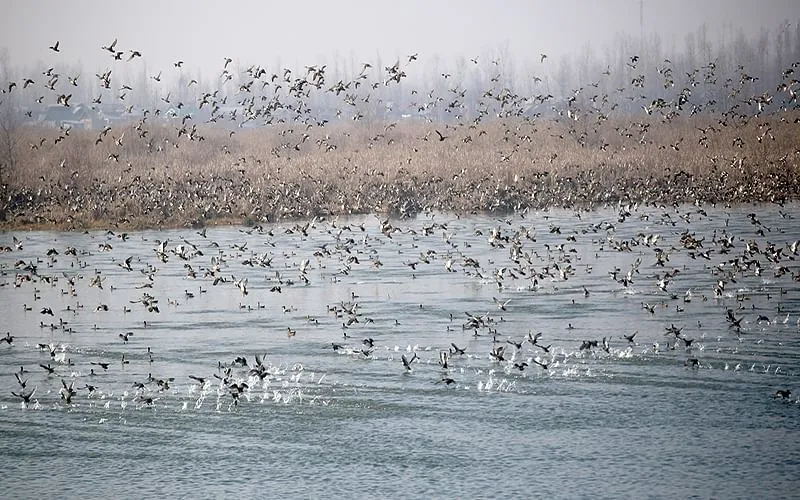Srinagar, Nov 13: As winter is about to set in, hundreds of migratory birds from various European and Western countries have flown to this part of the world.
The first arrival of hundreds of migratory birds from far-off lands has made the wetland reserves of Jammu and Kashmir colourful.
Maintaining a centuries-old tryst with Kashmir, the winged guests have started to arrive here from far-off lands in an attempt to escape the harsh winter months of other countries for the relatively less harsh cold of Kashmir.
Twelve lakh migratory birds from Eastern Europe and Central Asia visited Kashmir’s wetlands last year, as per the Wildlife Department Kashmir’s annual census.
Every year, the Wildlife Department Kashmir, in collaboration with several other agencies and stakeholders, conducts a census to determine the number of migratory birds that visit Kashmir during the winter.
“These hardy souls fly in from Siberia and China, as also the Philippines, Eastern Europe, and Japan,” officials of the Wildlife Department said. “The winged visitors start arriving in Kashmir towards the middle of October as Kashmir presents them a comparatively hospitable alternate habitat compared to the extreme freezing conditions in their natural habitats in the northern hemisphere.”
The migratory birds are these days landing in the famous wetlands of Kashmir including Hokersar, Wular Lake, Haigam, Shalbugh, and other water bodies.
The visiting bird species stay in the wetlands of snow-bound Kashmir for five months during winter up to March before leaving for their respective regions.
During this period, the wetlands reflect a crowded look, with hoots of different visiting species.
However, the threat of poaching of these birds over the years is a major concern for these migratory birds as well as the department, which according to the concerned officials has been stopped to a great extent.
“The migratory birds like every year started arriving in Kashmir and hundreds of these have reached Kashmir wetlands,” Wildlife Warden, Wetlands, Ifshan Dewan told Greater Kashmir.
She said that to provide a feasible ambience to these visiting avian guests, the Wildlife Department had taken several measures to maintain sufficient water levels in all the wetlands of Kashmir.
“Poaching was one of the reasons that had caused some worry during the past few years. But during the past some time since the arrival of these migratory birds, the field staff of the department have increased their vigil reducing the poaching threat,” Dewan said. “We have increased our vigil, and are conducting regular checks around these wetlands to check the illegal hunting of these birds. We have formed squads to stop this illegal practice of killing migratory birds.”
Besides Hokersar, the migratory birds flock the Wullar Lake and other wetlands like Hygam, Shallabugh, Pampore, Dal Lake, and Mirgund in surrounding areas, bringing cheer to bird watchers of Kashmir.
Two Kashmiri wetlands were among 11 added by the government to the list of Ramsar sites to make a total of 75 Ramsar sites covering an area of 13,26, 677 hectares in the country in the 75th year of independence.
The wetlands that were declared Ramsar sites were Shallabugh in Ganderbal district and Haigam in Srinagar. With the addition of these two, the number of Ramsar sites in J&K has gone up to 5. Surinsar-Mansar in Jammu and Hokersar and Wullar in Kashmir are already Ramsar sites.
A Ramsar site is a wetland site designated to be of international importance under the Ramsar Convention, also known as ‘The Convention on Wetlands’, an intergovernmental environmental treaty established in 1971 by UNESCO, which came into force in 1975. It provides for national action and international cooperation regarding the conservation of wetlands, and wise sustainable use of their resources.







